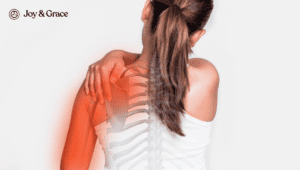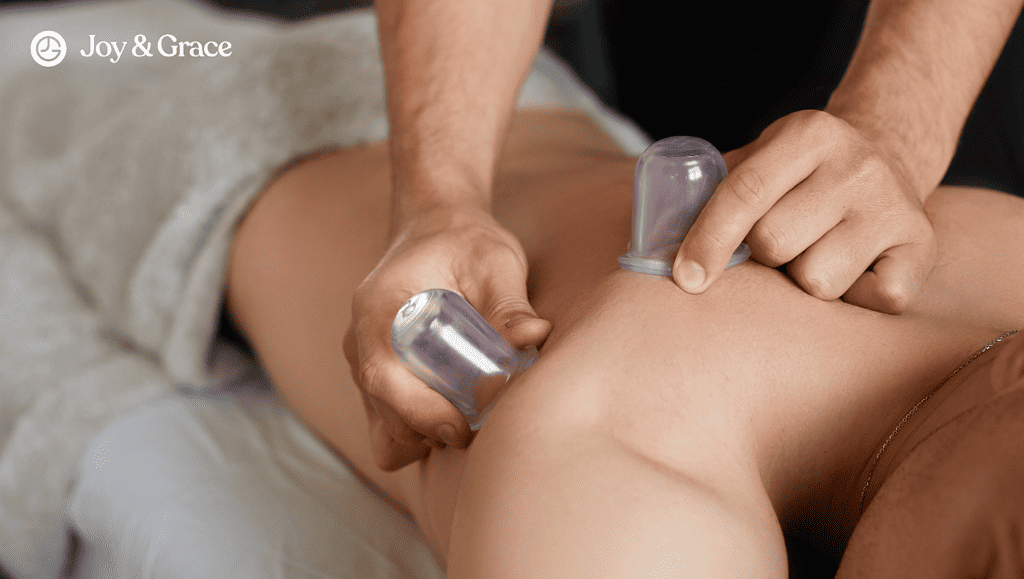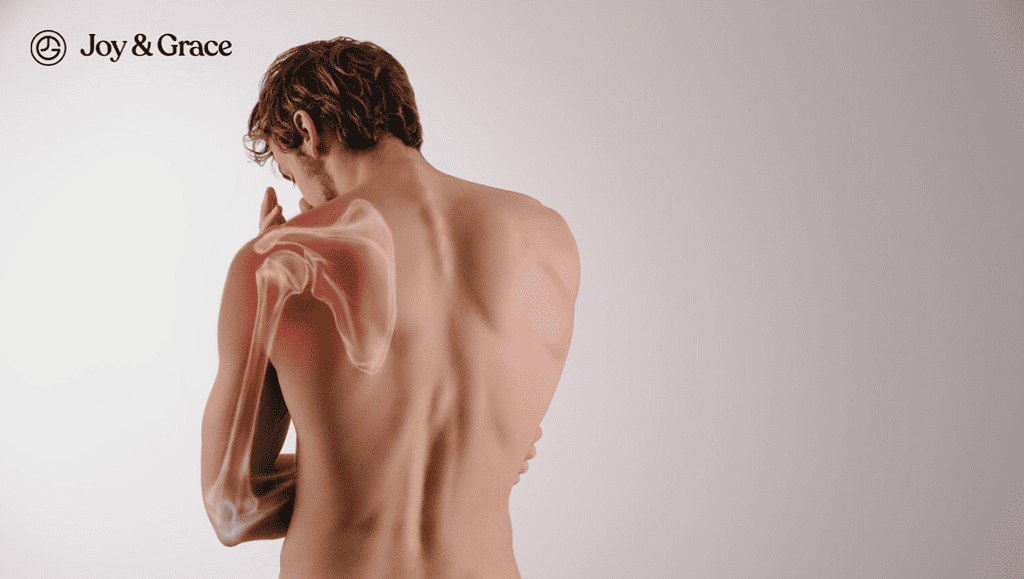In the hustle of our everyday lives, it's easy to dismiss the signals our body sends us. That persistent ache from your shoulder down to your hip might seem like a minor inconvenience, but it could mean something is wrong.
Join us as we explore the intricate world of this mysterious pain.
Can Shoulder Pain And Hip Pain Be Related?
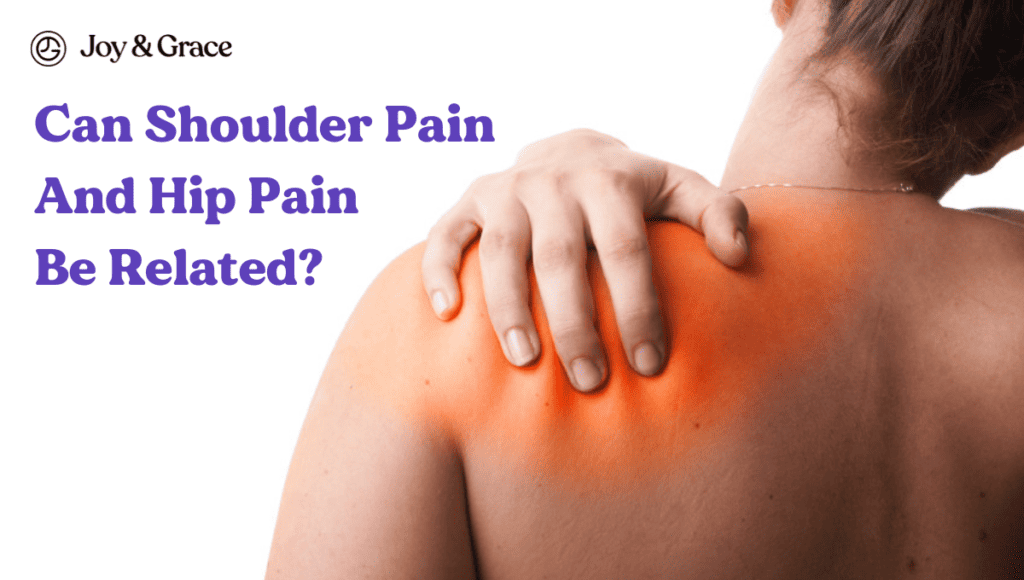
Shoulder and hip pain, though seeming disjointed, can indeed be related in certain scenarios.
Our bodies function like a chain, where pain or weakness in one part can cause issues in another.
Hence, the connection between shoulder and hip pain is often indirect.
It's less about a single condition affecting both areas and more about how pain in one part leads to compensations that strain the other.
For instance, if you constantly experience hip pain, you may unknowingly adjust your posture to minimize pain. This can lead to irregular walking patterns or standing stances, which may result in excess strain on your shoulder.
Likewise, chronic shoulder pain can cause you to alter your natural body alignment, thus straining the hip joints.
This is also described in a 2021 study conducted in Japan.
In this study, researchers investigated the connection between hip movement, arm strength, and shoulder or elbow injuries in 135 high school baseball pitchers.
Injured pitchers had lower hip rotation and abduction strength. Hip abduction is the movement of your leg away from the center of your body, such as moving your leg sideways.
This suggests that poor hip mobility might increase the risk of shoulder or elbow injuries in high school baseball pitchers.
Another study looked at hip and shoulder movement in professional baseball players to see if there were differences between those with and without a history of shoulder injury.
They found that players with shoulder injuries had specific changes in their hip and shoulder movement patterns. This shows a connection between hip and shoulder movements, especially in players who have had shoulder injuries before.
This is even seen in people who don’t play baseball. According to a study from 2022, people with chronic shoulder pain had trouble moving their upper back and hips. They also experienced muscle fatigue in their lower back and hip muscles.
Another important aspect to consider is the role of stress in bodily discomfort. During periods of high stress, our perception of pain can be altered. Stress can make hidden aches worse, especially in the shoulder and hip, which are often hurt by bad posture.
That said, while it's not typical for a single medical condition to be the root of both shoulder and hip pain, it's certainly not out of the question. Let's delve into that possibility now.
What Condition Causes Joint Pain In The Shoulders and Hips?
Although less frequent, certain conditions can cause pain in both the shoulders and hips. Some of these include:
- Muscle Strain
Besides poor posture, heavy lifting or quick twists can strain the shoulder and hip muscles, causing pain.
- Injury or Trauma
A recent injury or trauma to the shoulders or hips could lead to pain in these areas. This is particularly true if the injury results in an altered gait or posture, putting strain on your shoulder and hip joints. This goes back to the “indirect link” we mentioned earlier.
For instance, you might start limping if you’ve hurt your foot. This can place undue stress on both your shoulder and hip over time. This eventually leads to painful shoulder and hip joints.
- Fibromyalgia
This condition is characterized by widespread muscle and soft tissue pain. People with fibromyalgia often experience pain in multiple areas, including the shoulders and hips. Common symptoms of fibromyalgia include:
- Muscle pain all over the body
- Intense and chronic fatigue
- Sleep problems
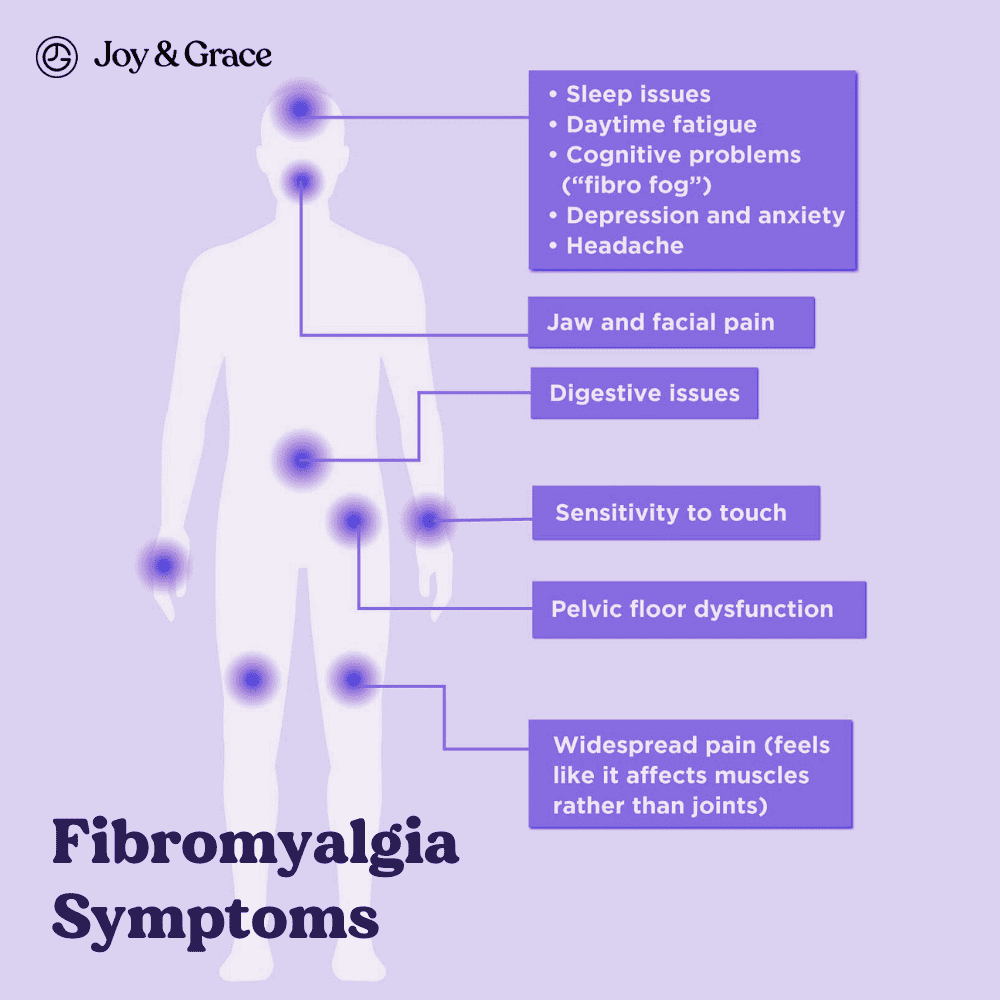
- Polymyalgia Rheumatica
Polymyalgia rheumatica is an inflammatory disorder that causes muscle pain and stiffness. It primarily affects the neck, shoulders, and hips. It is more common in older adults and can cause aches and stiffness, especially in the morning or after periods of inactivity. Other symptoms of polymyalgia rheumatica include:
- Fatigue
- Fever
- Limited range of motion in the affected areas
- Rheumatoid Arthritis
This is an autoimmune disorder that causes inflammation in the joints. It can affect multiple joints simultaneously, including the shoulders and hips. Common symptoms of rheumatoid arthritis include:
- Joint pain, swelling, and stiffness, often symmetrical (affecting the same joints on both sides of the body),
- Fatigue
- Warmth and redness in the joints
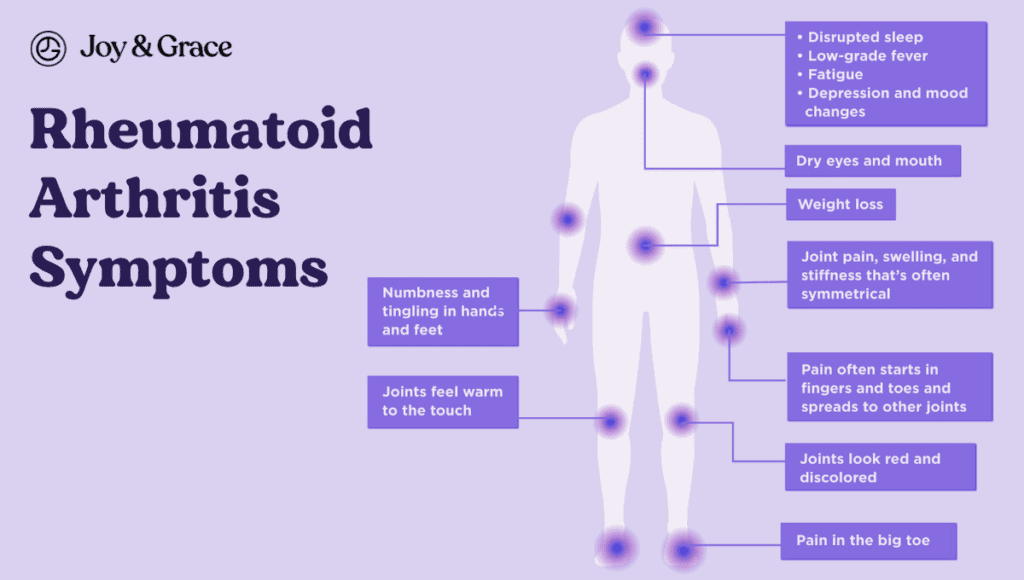
- Osteoarthritis
This degenerative joint disease occurs when the protective cartilage on the ends of bones wears down over time. It can affect any joint, including the shoulders and hips. Symptoms of osteoarthritis include:
- Joint pain and stiffness, typically worsening with activity and improving with rest
- Joint swelling
- Reduced range of motion in the affected joints
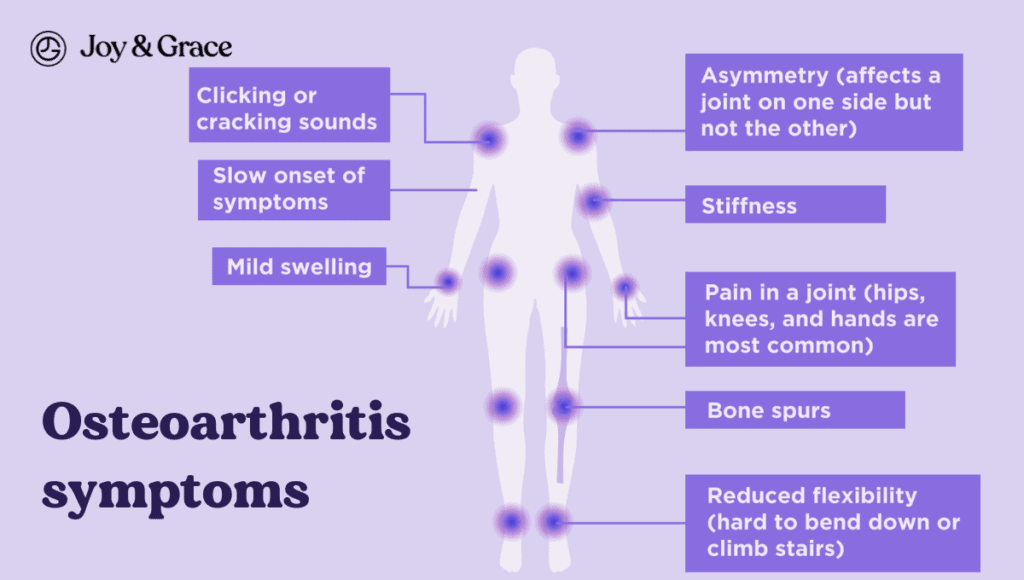
- Lupus
Lupus is an autoimmune disease that can cause joint pain and swelling, affecting various joints. Symptoms of lupus include:
- Joint pain and swelling
- Skin rashes, often in response to sunlight (photosensitivity),
- Fatigue, fever, and general malaise (feeling unwell)
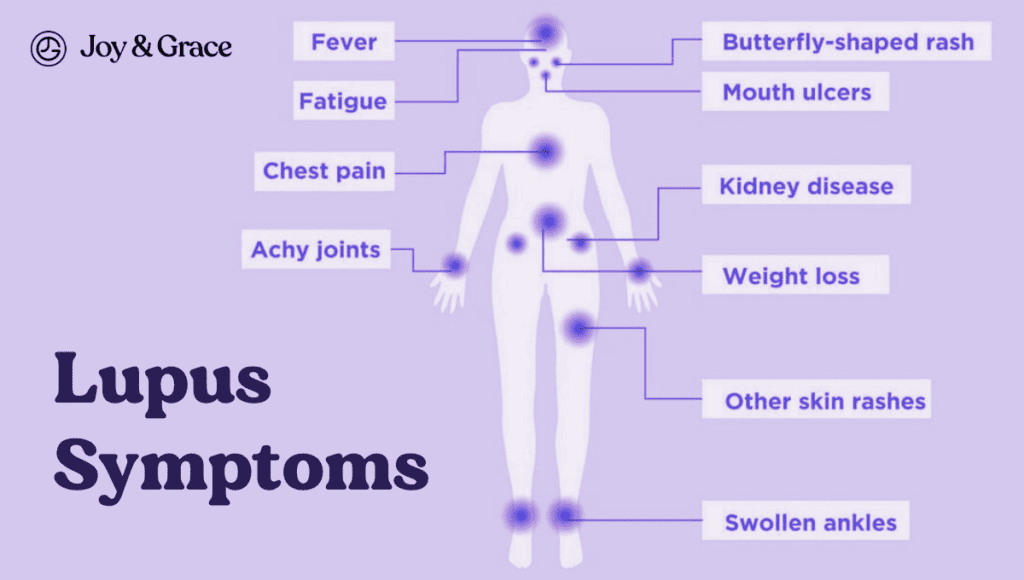
- Spondyloarthropathy
Another possible factor that can cause both shoulder and hip pain is spondyloarthropathies. An example of this condition is ankylosing spondylitis. These inflammatory conditions often affect the following joints:
- Spine
- Hips
- Shoulder joints
Common symptoms of spondyloarthropathy include:
-
- Lower back pain and stiffness, often worse in the morning, which improves with exercise
- Enthesitis or inflammation in sites where tendons or ligaments attach to bones. This leads to pain and swelling in areas like heels and elbows
- Peripheral joint pain, especially in the hips and knees
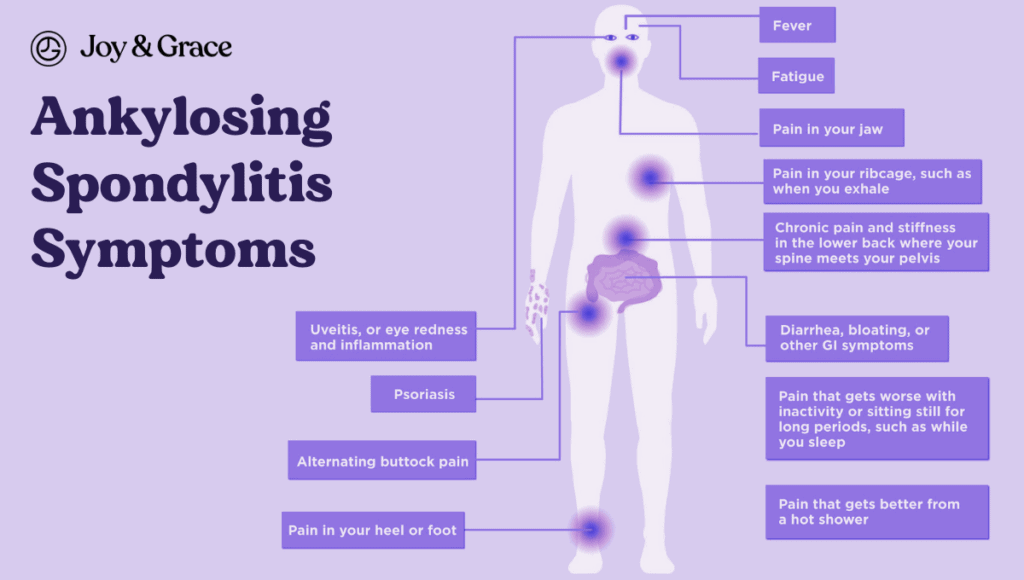
- Infections
Certain infections can cause joint inflammation, leading to pain in multiple areas. This can include your shoulders and hips. When infection occurs in the joints, it’s called septic arthritis. Symptoms of septic arthritis include:
- Fever
- Severe pain and stiffness
- Redness and swelling of the affected joint
It’s important to note that the conditions we mentioned do not always cause both shoulder and hip pain. It may be possible that different conditions are causing your symptoms.
Can Hip Problems Cause Neck Pain?
As mentioned above, misalignment in the hips may trigger compensatory actions by other body parts. This includes the neck, too. Decreased mobility in the hips may also contribute to the problem.
For instance, a study with 327 students showed that neck pain was more common in those with uneven hip mobility. Even after considering factors like gender and exercise, those with hip imbalances had a much higher chance of experiencing neck pain. This suggests a possible connection between hip issues and neck discomfort.
Additionally, it's important to remember that the conditions mentioned earlier, such as rheumatoid arthritis or osteoarthritis, can't be ruled out as potential causes of neck pain.
Can A Pinched Nerve Cause Shoulder And Hip Pain?
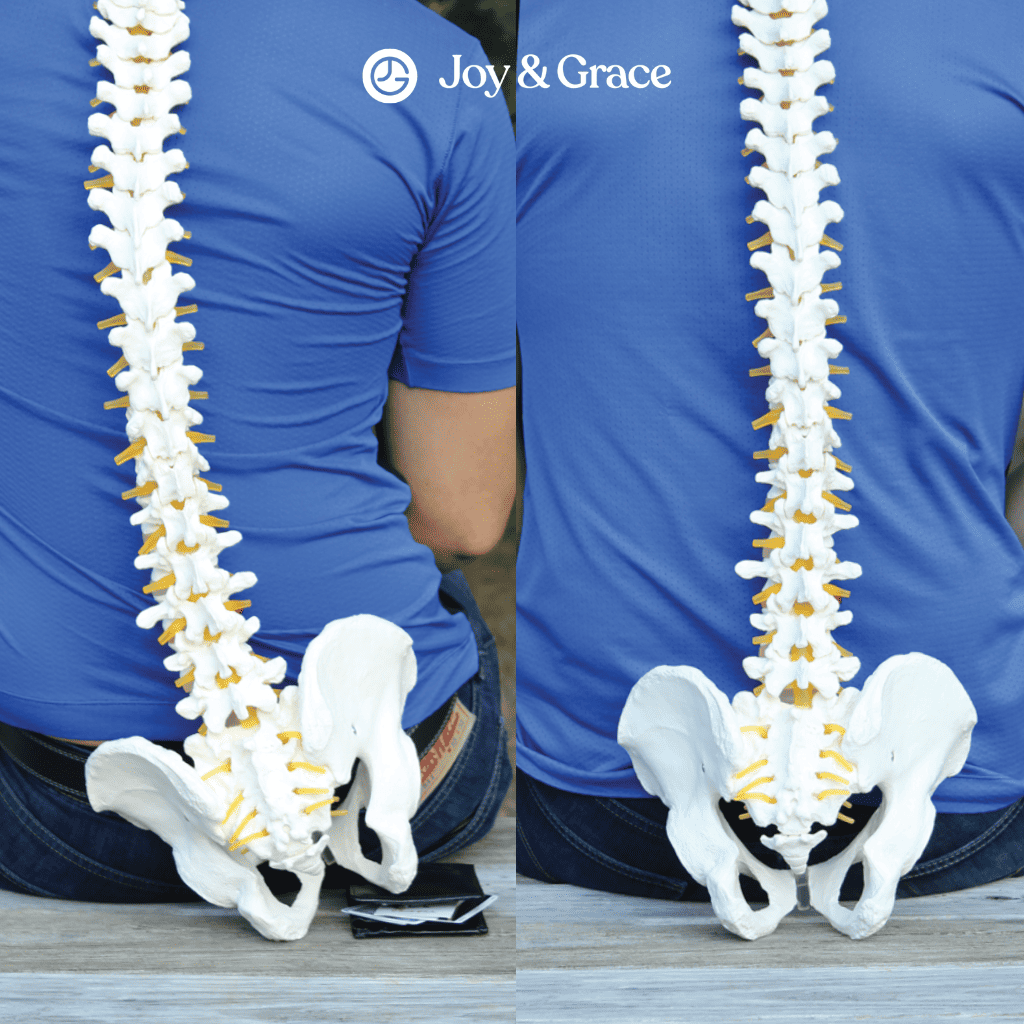
Absolutely, a pinched nerve is a common culprit behind both shoulder and hip pain.
Problems with the spine, like herniated discs, can put pressure on nerves that go to the shoulders and hips. Shoulder pain can arise from a pinched nerve in the neck, known as cervical radiculopathy. Meanwhile, hip pain may result from a pinched nerve in the lower back, called lumbar radiculopathy. But it’s important to note that there are no documented cases of pinched nerves causing shoulder and hip pain simultaneously.
However, let's circle back to our earlier point about poor posture.
It's not just muscles that suffer from this; nerves can be impacted, too. Poor posture, especially when sitting, can affect the lower back, glutes, hips, and shoulders. Even just one affected area can lead to adopting awkward positions to relieve discomfort. Throw in some stress and anxiety, and it's a recipe for trouble.
So, if you've been working with poor posture lately or going through a stressful period, these could be the usual suspects, as mentioned before.
What Self-Care Tips Alleviate Radiating Hip And Shoulder Pain?
Unrelenting pain stretching from your shoulder to your hip can be daunting. Here are a few self-care methods that might offer relief:
- Gentle Stretches
Warming up your body with simple and gentle stretches can help reduce stiffness in the shoulder and hip joints. Remember, it's not a competition. Take it slow and steady!
- Heat Therapy
Using a heated pad or warm towel on affected areas can help relax muscles and reduce pain.
- Over-the-counter Medication
Non-prescription drugs like ibuprofen could help manage the pain. But keep in mind to follow the directions on the packaging or call your doctor.
- Regular Exercise
Simple exercises like walking, swimming, or cycling can help strengthen muscles around the hip and shoulder.
- Rest and Relaxation
Sometimes, your body just needs time to heal. Listen to those cues and give yourself ample rest time.
- Proper sleep
Ensure you sleep in the correct position to avoid exacerbating your shoulder and hip pain. For instance, sleeping on your back with a pillow to support your knees could help release tension from the hip area.
Please consult your healthcare provider if your shoulder and hip pain persists or worsens.
Can Improving Hip Mobility Help Prevent Shoulder Pain?
Absolutely! As mentioned earlier, decreased hip mobility may contribute to shoulder injuries and pain. So, performing exercises or stretches that open up and strengthen your hip joints can be a great way of preventing and possibly relieving shoulder pain.
You can try the following stretches to increase hip mobility:
- Sit on a chair.
- Bend your right knee and cross your right ankle over your left thigh.
- Gently press down on your right knee to feel a stretch in your right hip.
- Switch sides and repeat.
- Sit on the floor with your back straight and the soles of your feet touching each other.
- Hold your feet with your hands and gently press your knees toward the floor.
- Start in a push-up position.
- Bring your right knee forward and place it behind your right wrist.
- Extend your left leg straight behind you.
- Lower your upper body toward the floor, stretching your arms out in front of you or resting your forehead on the ground.
- Hold the stretch, then switch sides and repeat.
- Kneel on your right knee with your left foot in front, forming a 90-degree angle with your left knee.
- Push your hips forward slightly while keeping your back straight.
- You should feel a gentle stretch in your right hip flexor.
- Switch sides and repeat.
- Lie on your back with your knees bent and your feet flat on the floor.
- Cross your right ankle over your left knee, creating a figure 4 shape with your legs.
- Reach through the space between your legs and hold the back of your left thigh.
- Gently pull your left thigh toward your chest until you feel a stretch in your right hip.
- Switch sides and repeat.
Regularly practicing these exercises can help make your hips more flexible, reducing the chance of pain.
Remember, these strategies are largely preventative. If your pain continues or worsens despite your efforts, it may be a sign of a more serious underlying condition. You should consult with a healthcare professional.
Diving Deeper Into The Science: How The Shoulder And Hip Are Interconnected
In a 2022 study, researchers explored the biomechanics of throwing and its implications for shoulder and hip injuries. The study highlights the importance of the “kinetic chain,” a concept crucial for powerful throws and injury prevention.
The kinetic chain is how the body's parts work together during a throw. During a throw, energy moves from the core and lower body to the upper body, focusing on the hip and shoulder. This chain is made up of a body with:
- The right structure (strength and flexibility)
- Sequential force generation (building power step by step)
- Efficient movement patterns (smooth energy flow)
If there are problems in the kinetic chain, like tight hips or bad movement patterns, the upper body may try to compensate, raising the risk of injury. The study stresses that "hip-shoulder separation," when hips and shoulders move separately during a throw, is a key sign of a healthy kinetic chain.
What we're trying to say is that there's concrete scientific research supporting the idea that shoulder problems can lead to hip problems and vice versa. This interconnectedness, although seemingly distant from each other, is a crucial aspect of how our bodies work. Understanding this relationship is key to maintaining overall health and preventing injuries in these areas.
Takeaway
In conclusion, your hip pain can indirectly cause shoulder pain and vice versa. However, they could also be unrelated. Still, knowing how hip and shoulder pain are related can help you deal with your condition better.
This link is especially evident in athletes, where specific movements impact both shoulder and hip joints. This is because our movements function like a chain. If one part of the chain isn’t working properly, the rest of the chain will start to have problems, too.
Various factors can also contribute to simultaneous pain in both areas. This can include:
- Poor Posture
- Muscle strains
- Stress
- Trauma
- Underlying conditions such as fibromyalgia or arthritis
Proper self-care can relieve radiating pain and improve mobility. Simple changes in your daily activities can be all you need to eliminate the pain. This includes:
- Rest and relaxation
- Regular exercise and stretching
- Heat therapy
- Proper sleep
- Over-the-counter medication
If your pain persists or worsens, consult a healthcare professional. They can provide an accurate diagnosis and tailored treatment, ensuring a better quality of life.






